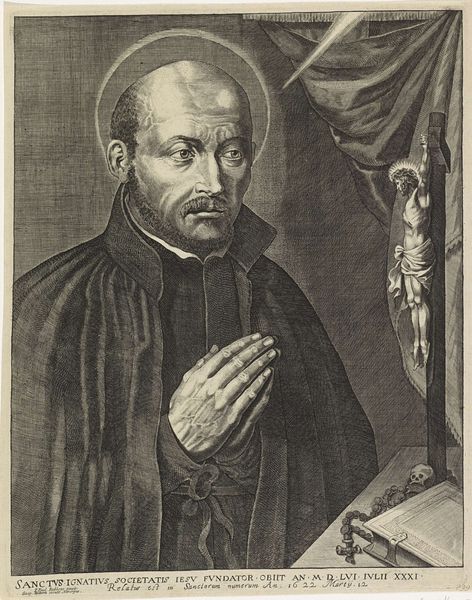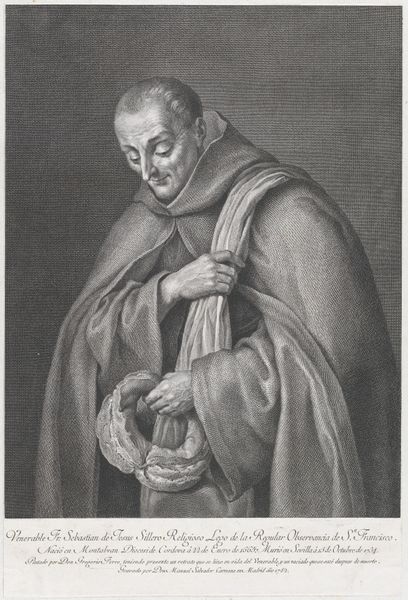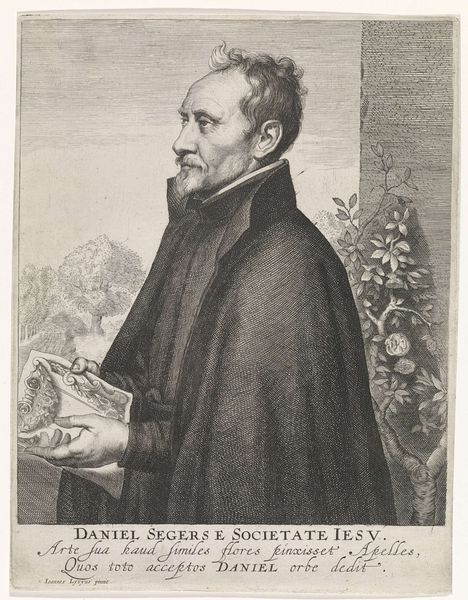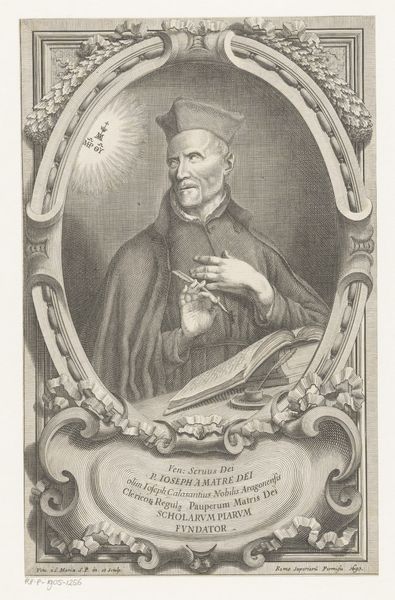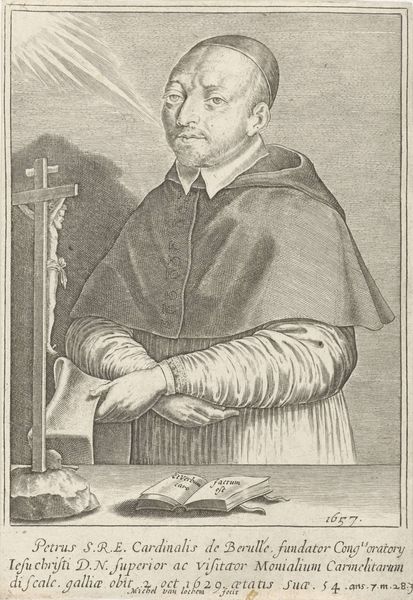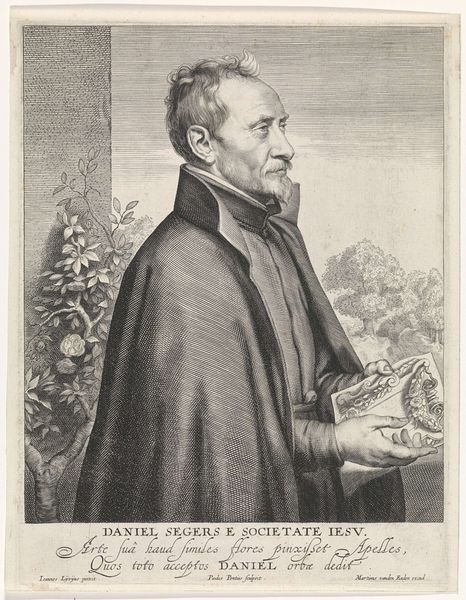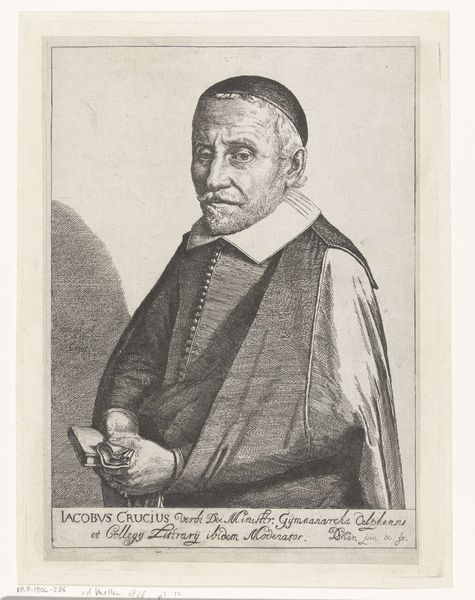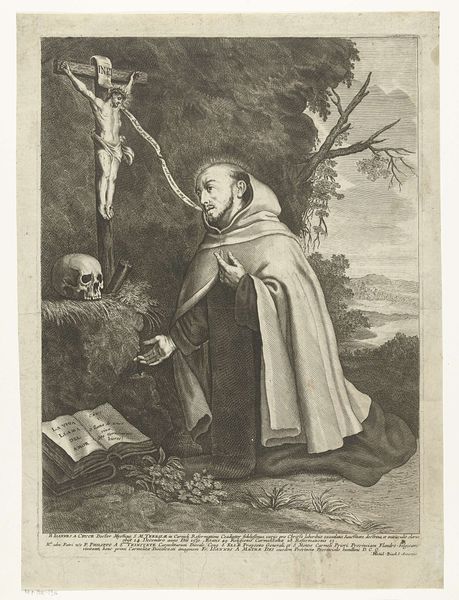
print, engraving
#
portrait
#
allegory
#
baroque
# print
#
old engraving style
#
vanitas
#
engraving
Dimensions: height 162 mm, width 108 mm
Copyright: Rijks Museum: Open Domain
Curator: What strikes me immediately is the haunting gentleness radiating from this image, especially coming from something made with such a graphic and visually stark medium. It's quite powerful. Editor: We are looking at "Heilige Camillus de Lellis in gebed," an engraving by Claude Olivier Gallimard dating back to 1743. Engravings, prints...it's a democratic art form when you consider how reproducible these are and how this makes art accessible to the public beyond elite art collectors. Curator: Exactly! It is made for widespread dissemination, and the composition feels theatrical. I'm immediately drawn to Camillus' tender gaze down at the skull and the contrast with the stark depiction of Christ crucified. It stirs something in the soul. What do you think about this stark opposition in textures? Editor: What catches my attention is the painstaking labor involved, the craft. It takes skill to pull out emotion, softness, using tools that basically carve and scratch on metal. The fine detail really reflects that labor: Look at how Gallimard differentiates the textures, like the subtle play of light on Camillus’s halo versus the deep shadows on his robe and across his hand. Curator: It almost glows, that halo, doesn’t it? Like inner light, but rendered through such rigorous means. I’m stuck between the spiritual yearning and this sense of practical action embodied. He founded an order dedicated to the sick... That's tangible help manifested in this art form. Editor: Precisely. He ministers to physical, material needs and the means of artmaking underscores the same focus on physical action and human care through careful craft. Think of the paper too; rag paper was being supplanted by wood pulp. Its increased use made way for new means of mass production... It mirrors what de Lellis intended! Curator: It makes you wonder who first held it. A simple devotion hanging on a wall? It’s passed through so many hands over time. I have the strangest sense of it linking them. Editor: Absolutely. This particular artwork, viewed through the lens of the materials and the meticulous process, presents Camillus less as an ethereal saint and more as a very human man performing practical deeds. I appreciate that Gallimard underscores this! Curator: So perhaps this work itself, designed for mass consumption, speaks to how material can create such enduring immaterial impact. A profound, thought-provoking blend indeed. Editor: And it highlights the value and accessibility in artistic representation and art making itself.
Comments
No comments
Be the first to comment and join the conversation on the ultimate creative platform.
